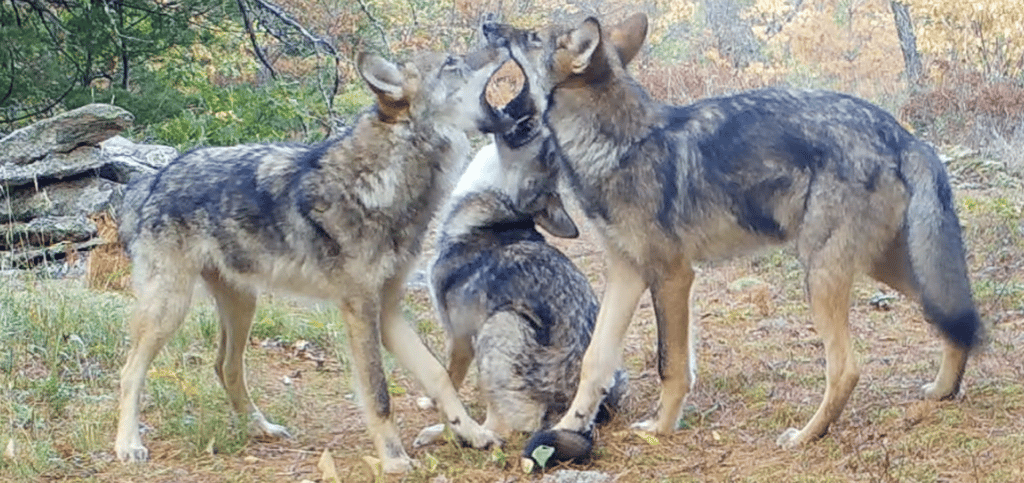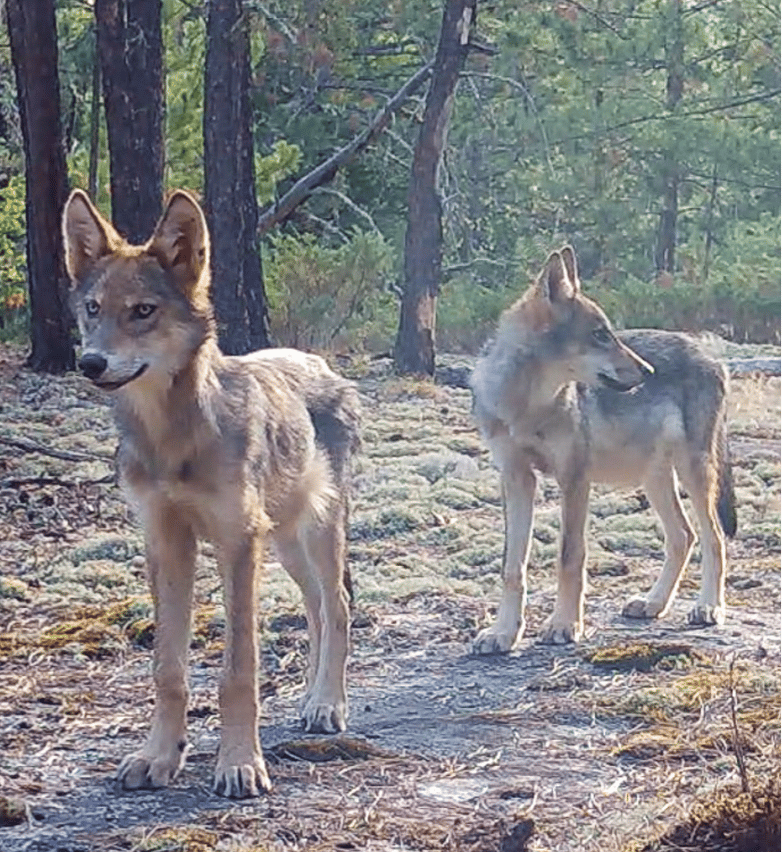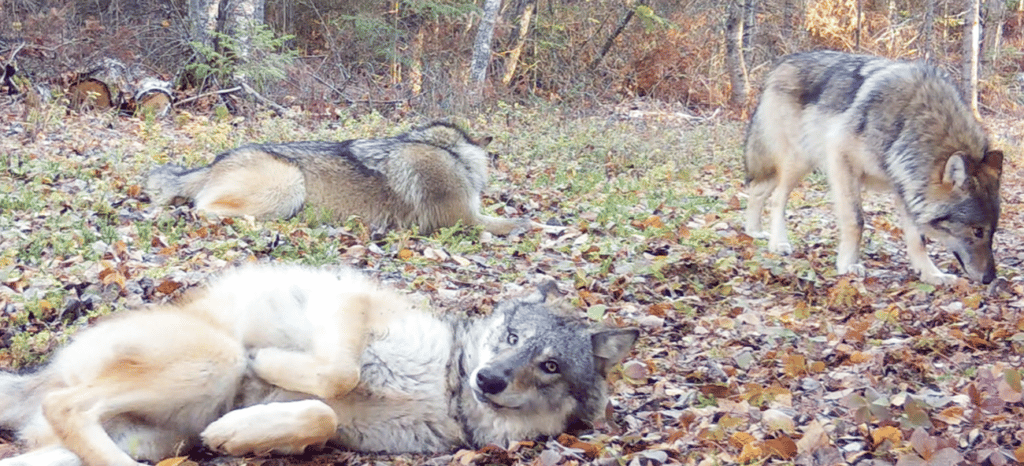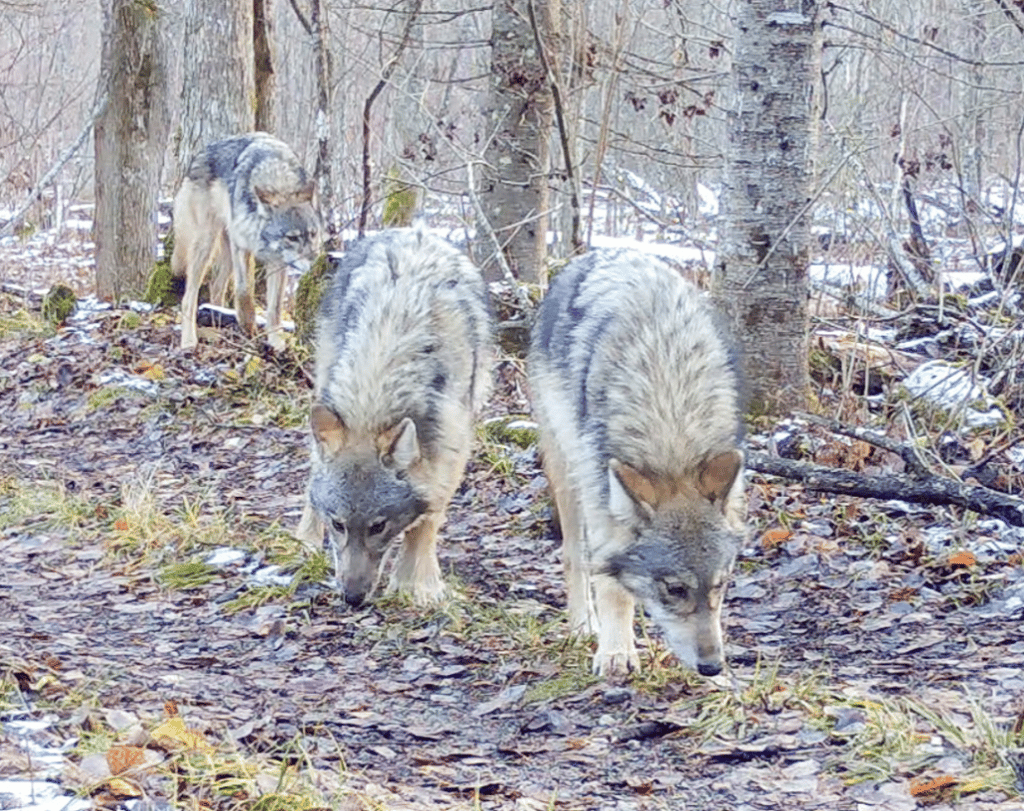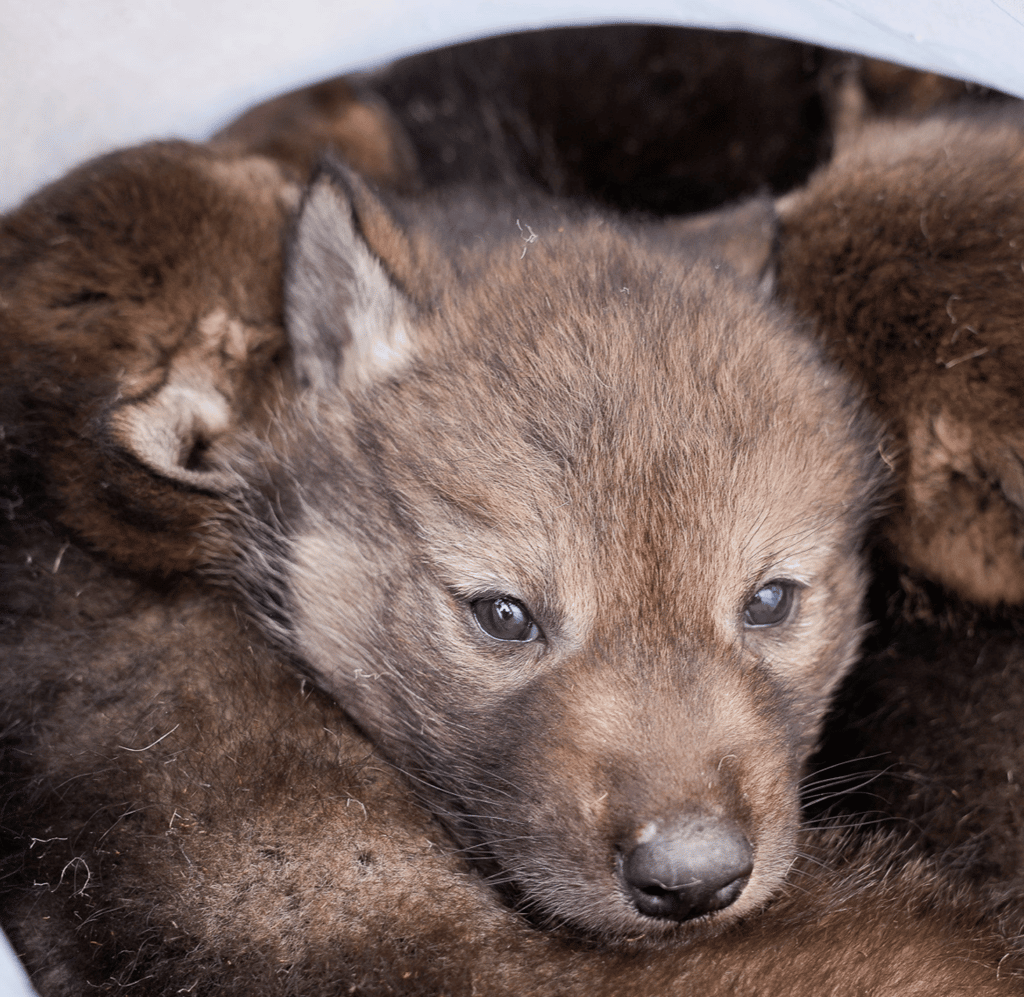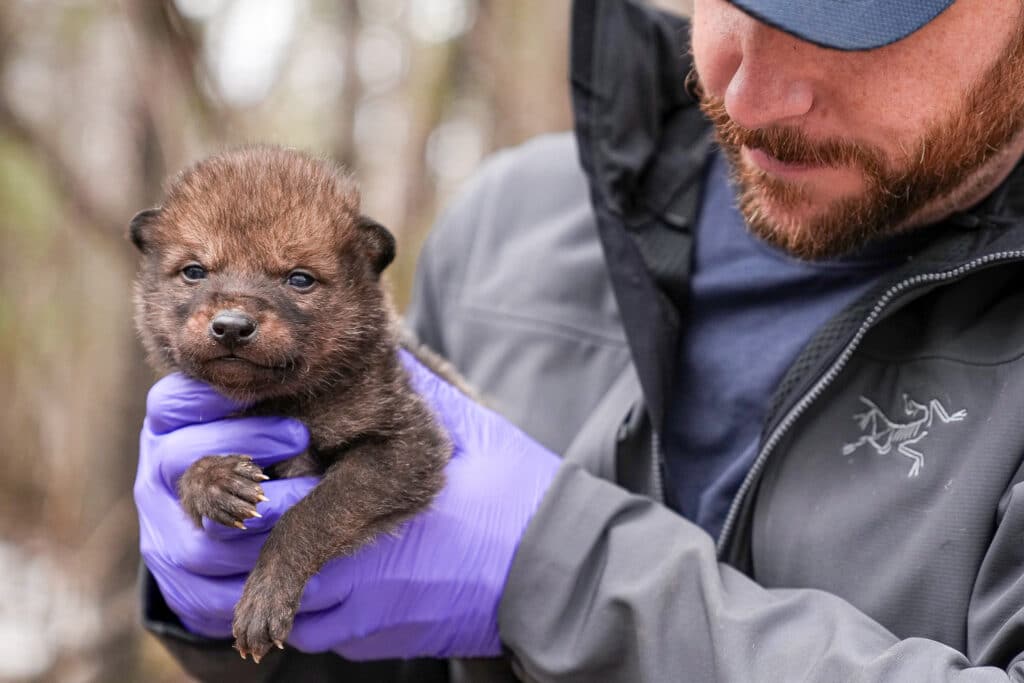
A new publication from the Voyageurs Wolf Project provides an update on the number of wolves in the region, and illustrates how the wild area has long been a refuge for the canines. Notably, this year the researchers say pup survival was relatively high, leading to overall numbers near the long-term average.
Using remote cameras, GPS collars, and other methods, the team estimated there are 63.2 wolves per 1,000 square kilometers in the area, which they call “a very high-density population.”
Because of how wolves move and occupy territories in and out of the study area, the researchers don’t estimate a total population number. Looking at the entire 1,800 square kilometer region, there could be approximately 114 wolves at any given time.
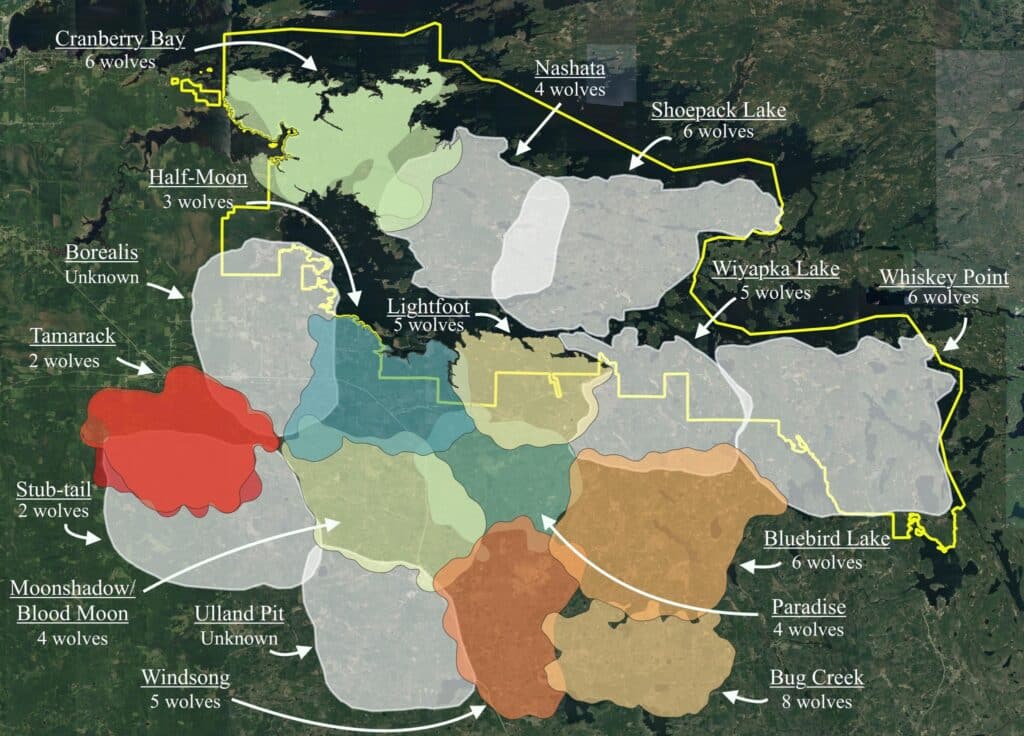
The researchers note that Voyageurs was the only National Park in the lower 48 states to never lose its wolf population, while the animals were extirpated elsewhere in the 19th and 20th centuries. They also compared their recent findings to population studies conducted as far back as 1987, and found the current estimate to be consistent.
“Our assessment suggests the current wolf population size is relatively similar to what is was 25-35 years ago, suggesting that the [Greater Voyageurs Ecosystem] has supported a relatively stable, high-density wolf population for decades,” project lead Thomas Gable wrote.
This year’s numbers represent a significant rebound from the past couple years. They are 16 percent higher than last year, and nearly 50 percent higher than a nine-year low reached two years ago.
The researchers say pup survival drove much of that population increase. Last year, more than half of the pups born in the spring made it to fall. The year before, just seven percent of pups survived. This bumped up the average pack size significantly, from 3.1 to 4.7 wolves per pack.


